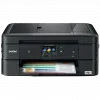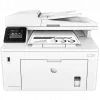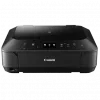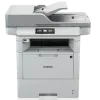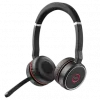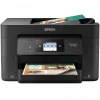Near field communication (NFC) is a set of ideas and technologies that enable smartphones and other devices to establish radio communication with each other by touching them together or bringing them into proximity, typically a distance of 10 cm (3.9 in) or less. Each full NFC device can work in 3 modes: NFC target (acting like a credential), NFC initiator (as a reader) and NFC peer to peer. Most of the first business models like advertisement tags or other industrial applications have not been successful, always overtaken by another technology (3D barcodes, UHF tags, ...) The main advantage of NFC is that NFC devices are often cloud connected. "Connected" credentials can be provisioned over the air unlike a standard card (Hotel or visitor applications). All connected NFC enabled smartphones can be provisioned with dedicated apps, which gives any application hundreds of millions of potential dedicated readers in opposition of the traditional dedicated infrastructure of ticket, access control or payment readers. All NFC peers can connect a third party NFC device with a server for any action or reconfiguration.
As with proximity card technology, near-field communication uses electromagnetic induction between two loop antennas located within each other's near field, effectively forming an air-core transformer. It operates within the globally available and unlicensed radio frequency ISM band of 13.56 MHz on ISO/IEC 18000-3 air interface and at rates ranging from 106 kbit/s to 424 kbit/s. NFC involves an initiator and a target; the initiator actively generates an RF field that can power a passive target (an unpowered chip called a "tag"). This enables NFC targets to take very simple form factors such as tags, stickers, key fobs, or cards that do not require batteries. NFC peer-to-peer communication is possible, provided both devices are powered. NFC tags contain data (currently between 96 and 4,096 bytes of memory) and are typically read-only, but may be rewriteable. The tags can securely store personal data such as debit and credit card information, loyalty program data, PINs and networking contacts, among other information. They can be custom-encoded by their manufacturers or use the specifications provided by the NFC Forum, an industry association with more than 160 members founded in 2004 by Nokia, Philips Semiconductors (became NXP Semiconductors since 2006) and Sony charged with promoting the technology and setting key standards. The NFC Forum defines four types of tags that provide different communication speeds and capabilities in terms of configurability, memory, security, data retention and write endurance. The Forum also promotes NFC and certifies device compliance and if it fits the criteria for being considered a personal area network.[citation needed]
NFC standards cover communications protocols and data exchange formats, and are based on existing radio-frequency identification (RFID) standards including ISO/IEC 14443 and FeliCa. The standards include ISO/IEC 18092 and those defined by the NFC Forum. In addition to the NFC Forum, the GSMA has also worked to define a platform for the deployment of "GSMA NFC Standards". within mobile handsets. GSMA's efforts include Trusted Services Manager, Single Wire Protocol, testing and certification, secure element.

